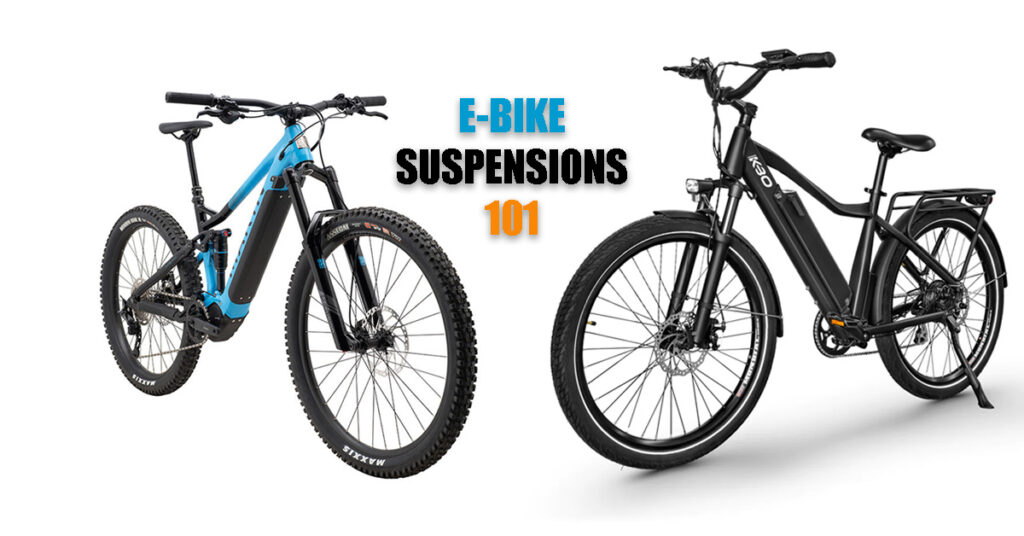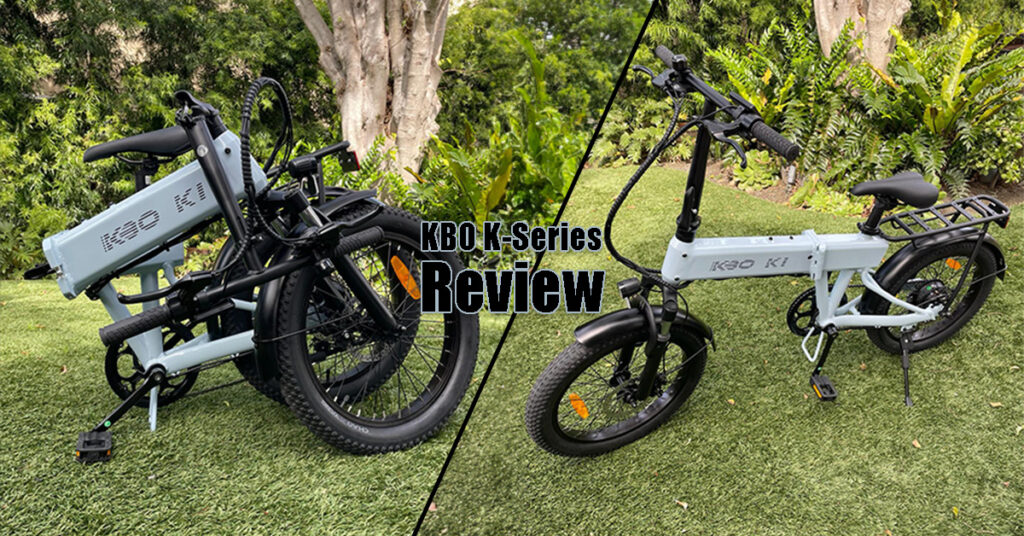E-bike suspensions can be a game-changer for your riding experience. Ever wondered why they matter or how they work?
I have ridden several e-bikes with suspensions as well as the ones without. While most of the time I like it if there is at least front-fork suspension. However, in some cases, the bike works much better if it comes with a rigid frame.
Dive into this comprehensive guide to understand the ins and outs of e-bike suspensions. When do you need them and when don’t? Read on and elevate your e-bike knowledge!
- E-Bikes with Suspensions Provide Smoother Ride
- Different Types of Suspension Systems
- How Suspension Works?
- Common Terminology About Bicycle Suspensions
- Factors to Consider When Choosing an E-Bike with Suspension
- Maintenance Tips for Electric Bike Suspensions
- Electric Road Bikes Don't Need a Suspension
- E-MTBs Must Have a Suspension
- Conclusion
E-Bikes with Suspensions Provide Smoother Ride
E-bikes, with their added weight from batteries and motors, demand more from their frames than traditional bicycles.
A suspension system isn’t just a luxury; it’s a necessity. It ensures a smoother ride, reduces strain on the bike’s components, and provides enhanced control, especially when navigating uneven terrains.
Simply put, suspensions amplify comfort and safety, making your e-bike journey more enjoyable and efficient.
Benefits of Suspension System
Here are the main advantages that e-bikes with suspensions have:
- Enhanced Comfort: Suspensions absorb shocks from bumpy roads, ensuring a smoother ride and less fatigue on longer journeys.
- Improved Traction: With suspension, the wheels maintain better contact with the ground, providing consistent grip, especially on rough terrains.
- Reduced Wear and Tear: By absorbing most of the impact, suspensions minimize the stress on the e-bike’s frame and components, prolonging their lifespan.
- Better Control: Suspensions allow for more precise steering and braking, especially when descending hills or navigating tricky paths.
- Versatility: E-bikes equipped with suspensions can tackle a wider range of terrains, from city streets to rugged trails, expanding your adventure horizons.
Different Types of Suspension Systems
Let’s delve into the diverse types of suspension systems available, helping you identify which suits your riding style best.
Front Suspension

E-bikes that have only a front suspension are called hardtail electric bikes. Front suspension, often referred to as a “suspension fork,” is installed in the front wheel of the e-bike.
It plays a crucial role in absorbing shocks from the front, especially when riding over obstacles, potholes, or rough terrains. Here’s a deeper look into its features and benefits:
- Design: Typically, front suspensions consist of two fork tubes that house springs or air chambers. These components compress and rebound as they encounter bumps, effectively reducing the impact felt by the rider.
- Benefits:
- Steering Precision: Front suspensions enhance steering accuracy, especially on uneven surfaces, ensuring that the front wheel remains in contact with the ground.
- Reduced Arm Fatigue: By absorbing the majority of frontal shocks, they prevent excessive vibrations from reaching the rider’s arms, ensuring a more comfortable ride.
- Enhanced Safety: They offer better control when braking suddenly or navigating downhill, reducing the chances of the front wheel locking up or skidding.
- Usage: Front suspensions are commonly found in city e-bikes and hybrid models. They’re ideal for riders who traverse a mix of urban roads and light off-road trails.
- Adjustability: Many front suspensions come with adjustable settings, allowing riders to fine-tune the stiffness or responsiveness based on their weight and the terrain.
- Weight and Efficiency: While adding a bit of weight to the e-bike, the benefits of improved comfort and control often outweigh the slight decrease in efficiency.
Rear Suspension
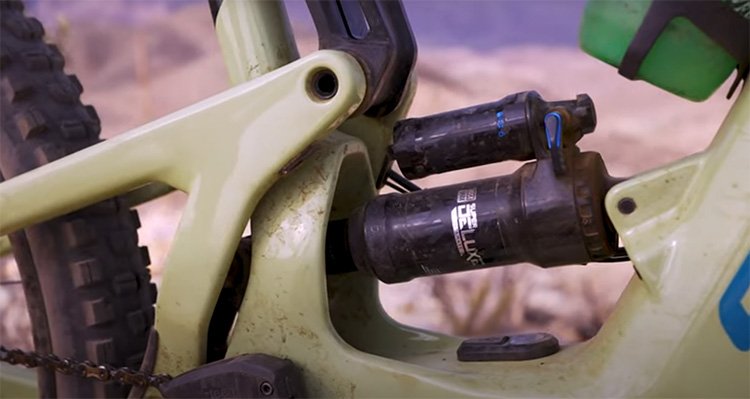
Rear suspension systems, commonly known as “shocks,” are integrated into the back wheel of the e-bike, providing a cushion against jolts and bumps from the rear. They play a pivotal role in enhancing the overall ride quality, especially on challenging terrains.
Here’s a comprehensive overview of its characteristics and advantages:
- Design: Rear suspensions typically consist of a shock absorber, often combined with a linkage system. This setup allows the rear wheel to move up and down, responding to terrain inconsistencies while maintaining wheel traction.
- Benefits:
- Improved Traction: By allowing the rear wheel to adapt to the terrain, rear suspensions ensure consistent grip, especially on uneven or rocky paths.
- Enhanced Comfort: They significantly reduce the impact transferred to the rider’s lower back and hips, providing a more comfortable and less jarring ride.
- Better Power Transfer: With improved traction, riders can pedal more efficiently, ensuring that maximum power is transferred to the ground, especially on uphill climbs.
- Usage: Rear suspensions are predominantly found in performance-oriented e-bikes, such as e-mountain bikes, designed for tackling rough trails and terrains.
- Adjustability: Advanced rear suspension systems offer multiple settings, enabling riders to customize the shock absorption level based on their preferences, weight, and the nature of the trail.
- Weight and Efficiency: While rear suspensions add some weight to the e-bike, the trade-off in terms of enhanced ride quality and control is often deemed worthwhile by off-road enthusiasts.
Full Suspension
Full suspension (dual suspension), as the name suggests, combines both front and rear suspension systems, offering a comprehensive shock absorption solution for e-bikes.
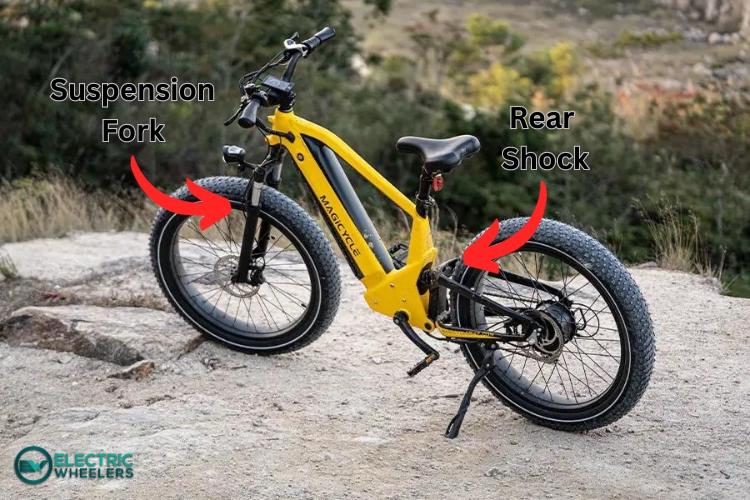
This dual setup ensures that both wheels can independently adapt to the terrain, providing unparalleled smoothness in ride quality. Here’s what you need to know:
- Design: Full suspension e-bikes incorporate a front fork for the front wheel and a shock absorber for the rear, often connected by a series of linkages. This design allows the entire bike frame to move and adjust according to the terrain’s demands.
- Benefits:
- Superior Comfort: By cushioning impacts from both the front and rear, full suspensions offer the smoothest ride possible, minimizing fatigue on longer or rougher rides.
- Optimal Traction: With both wheels able to adjust to surface inconsistencies, these e-bikes maintain consistent contact with the ground, ensuring excellent grip and stability.
- Enhanced Control: The ability to absorb shocks from all angles allows for precise steering, braking, and overall maneuverability, especially on technical trails or descents.
- Usage: Full-suspension e-bikes are the go-to choice for serious off-road enthusiasts and mountain bikers. They’re designed to handle everything from rocky paths to root-filled trails and steep descents.
- Weight and Efficiency: While they are generally heavier and might require more energy to pedal compared to hardtail e-bikes (those with only front suspension), the benefits of increased comfort, control, and traction on challenging terrains make them a worthy investment for many riders.
The bike doesn’t have to be necessarily a mountain bike. I have one moped-style e-bike, which is built to mostly ride in urban environments but it also has dual suspensions.
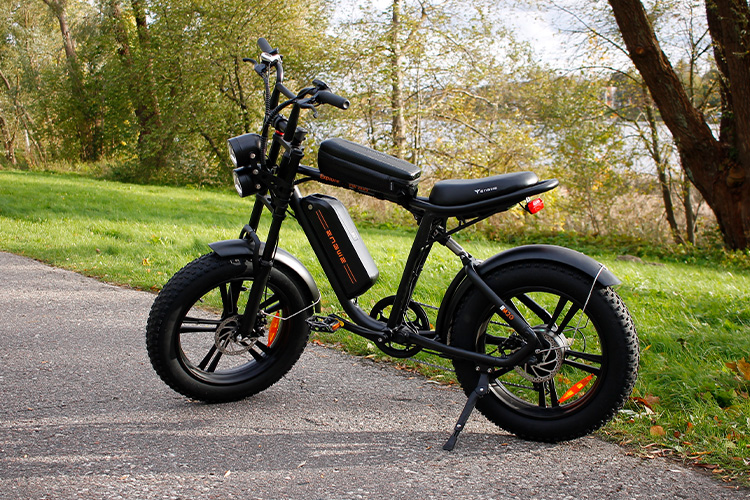
Suspension Seatpost
A suspension seatpost is a unique component designed to add an extra layer of comfort to your e-bike ride. Positioned between the bike frame and the saddle, it acts as a shock absorber, specifically targeting the impacts felt by the rider’s seat area.
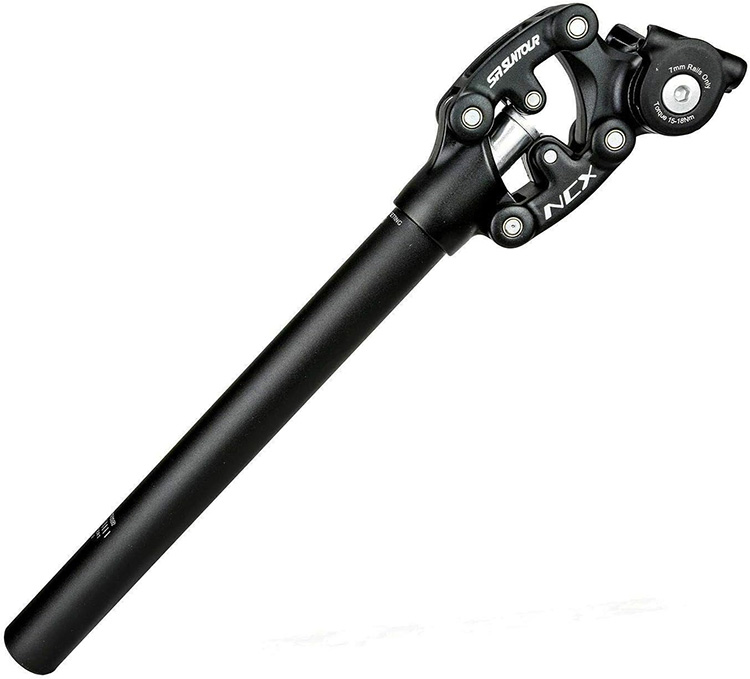
The seatpost contains an internal spring, elastomer, or air chamber that compresses upon encountering bumps or rough patches, cushioning the rider from jolts.
While it doesn’t replace a full bike suspension, a suspension seatpost significantly reduces shocks felt in the saddle area, making rides on uneven roads or trails more comfortable.
The suspension seatpost is ideal for urban commuters and recreational riders who traverse mixed terrains but don’t necessarily need a full suspension system.
Suspension Saddle
A suspension saddle is a specially designed bike seat that incorporates built-in springs or elastomers to absorb shocks and vibrations. Unlike the suspension seatpost, which focuses on the post itself, the suspension saddle’s cushioning mechanism is integrated directly into the saddle.
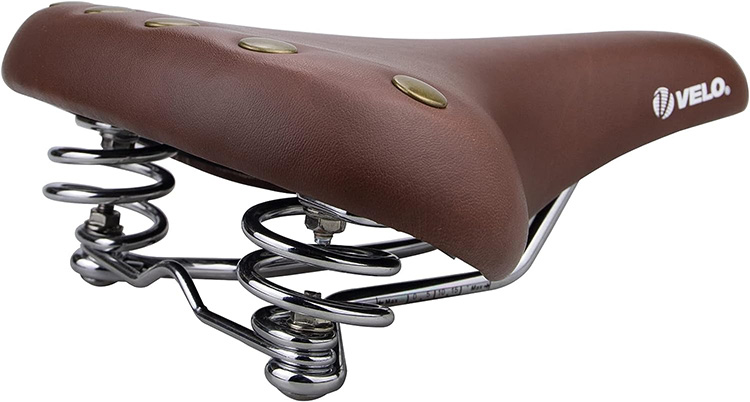
As the rider encounters bumps or uneven surfaces, the springs or elastomers in the saddle compress, reducing the direct impact felt by the rider. This design offers a smoother and more comfortable ride, especially on roads or paths with minor imperfections.
For those who don’t want to modify their e-bike’s structure with a suspension seatpost but still seek added comfort, a suspension saddle is a straightforward and effective solution.
No Suspension

E-bikes without any suspension, often referred to as “rigid” bikes, harken back to the traditional design of early bicycles.
While the world of e-bikes has seen rapid advancements in suspension technology, there’s still a place for these no-frills models.
Let’s delve into the pros and cons of e-bikes without suspension:
Advantages
- Lightweight: Without the added components of a suspension system, these e-bikes are generally lighter, making them easier to handle and maneuver.
- Low Maintenance: With fewer moving parts, there’s less that can go wrong. This means reduced maintenance time and costs.
- Efficiency: Rigid e-bikes offer direct power transfer from the pedals to the wheels, often resulting in a more efficient ride, especially on smooth surfaces.
- Cost-Effective: Typically, no-suspension e-bikes are more affordable than their suspension-equipped counterparts.
Disadvantages
- Reduced Comfort: Without a suspension to absorb shocks, riders will feel more of the road’s imperfections, which can lead to a bumpier ride.
- Limited Terrain Versatility: These e-bikes are best suited for smooth roads and may struggle or offer reduced comfort on rough or uneven terrains.
- Increased Wear and Tear: The lack of suspension means the frame and components absorb more of the impact, which could lead to quicker wear and tear over time.
How Suspension Works?
Suspension systems on e-bikes are marvels of engineering, designed to absorb shocks and ensure a smoother ride. They function by allowing certain parts of the bike to move independently, responding to the terrain’s inconsistencies.
But how do these systems actually work? Let’s delve into the core technologies behind e-bike suspensions:
- Spring Suspension: This is one of the most common and traditional forms of suspension. As the name suggests, it uses metal springs to absorb shocks. When the bike encounters a bump, the spring compresses, absorbing the impact. Once past the obstacle, the spring returns to its original position. The stiffness of the spring, often referred to as its ‘spring rate,’ determines how much it compresses under force. Some spring suspensions allow riders to adjust this rate for a firmer or softer ride.
- Hydraulic Suspension: Also known as air or pneumatic suspension, this technology uses air pressure in a sealed chamber as the shock-absorbing medium. When the bike hits a bump, the air in the chamber compresses, cushioning the rider from the impact. Post the bump, the air expands back, returning the suspension to its neutral state. Hydraulic suspensions are known for their lightweight and adjustability. Riders can easily modify the air pressure to suit their weight and riding style, ensuring optimal performance.
- Damping Mechanisms: While not a suspension type per se, damping is crucial to any suspension system’s functioning. It controls the speed at which the suspension compresses and rebounds. Without damping, a bike would keep bouncing after hitting a bump. Damping mechanisms often use hydraulic fluids to control these movements, ensuring that the suspension responds smoothly and quickly.
Quality Rear Shocks Incorporate Advanced Technology
Rear shocks, especially those found on modern e-bikes and mountain bikes share the foundational principles of spring and hydraulic (air) suspensions as described.
However, they often incorporate more advanced technologies and features to cater to the specific demands of rear-wheel impacts and the varied terrains riders might encounter. Here’s a closer look:
- Coil vs. Air Springs: Rear shocks can use either metal coil springs or air springs. Coil springs are known for their plush and linear feel throughout the compression, while air springs are lighter and can be easily adjusted by changing the air pressure.
- Piggyback Shocks: Some rear shocks have an external reservoir, often called a “piggyback.” This design provides additional fluid volume, which helps in better heat dissipation during prolonged descents, ensuring consistent shock performance.
- Compression and Rebound Adjustments: Many high-end rear shocks allow riders to fine-tune both compression (how the shock reacts to impacts) and rebound (how quickly it returns to its original position). This customization ensures optimal performance based on rider weight, riding style, and terrain.
Common Terminology About Bicycle Suspensions
Navigating the world of bicycle suspensions can sometimes feel like learning a new language. To help demystify the jargon, let’s break down some of the most common terms you’ll encounter:
- Travel: This refers to the maximum distance a suspension system (either fork or rear shock) can compress under force. It’s a measure of how much “give” a suspension has. For instance, a mountain bike designed for rough terrains might have more travel (often measured in millimeters) than a city e-bike.
- Preload: Preload is the initial force applied to the suspension spring, even before it takes on any additional weight or impact. Adjusting the preload can change the suspension’s characteristics, making it feel softer or firmer. It’s a way to tailor the suspension’s response based on rider weight and preferences.
- Rebound: After a suspension compresses (or “travels”), it returns to its original position. The speed at which it does this is called rebound. Adjusting the rebound can ensure the suspension doesn’t return too quickly (which can feel bouncy) or too slowly (which can feel sluggish).
- Sag: Sag is the amount the suspension compresses under the weight of the rider when stationary. It’s essential for optimal suspension performance. Too much sag, and the bike might bottom out easily; too little, and the ride can feel overly harsh. Typically, sag is set as a percentage of the total travel, often between 20% to 30% for many bikes.
- Lockout: A lockout feature allows riders to effectively “disable” the suspension, making the bike rigid. This is particularly useful on smooth surfaces or climbs where the bouncing effect of a suspension might hinder pedaling efficiency.
Factors to Consider When Choosing an E-Bike with Suspension
Choosing the right e-bike with the appropriate suspension system can significantly enhance your riding experience. However, with the myriad of options available, making an informed decision can be daunting.
To simplify the process, consider the following key factors:
Type of Terrain
- Smooth Urban Roads: If your primary riding environment is city streets and paved paths, a front suspension or even a rigid e-bike might suffice. These terrains don’t demand extensive shock absorption.
- Mixed Terrains: For those who occasionally venture onto gravel paths, forest trails, or uneven roads, an e-bike with front suspension and possibly a suspension seatpost would be ideal. They offer a balance between comfort and efficiency.
- Rough, Technical Trails: If you’re an off-road enthusiast exploring rocky terrains, root-filled paths, or mountain trails, a full-suspension e-bike is a must. It ensures optimal comfort, control, and traction on challenging surfaces.
Your Riding Style
- Casual Commuter: For daily commutes or leisurely weekend rides, comfort might be a priority. A front suspension or suspension seatpost can provide the necessary cushioning without adding much weight or complexity.
- Adventure Seeker: If you love exploring new trails and pushing your limits, a full-suspension e-bike would be more suitable. It offers the versatility and performance needed for varied terrains.
- Performance-Oriented: For those who prioritize speed and efficiency, especially on smoother terrains, a rigid e-bike or a front suspension e-bike with a lockout feature might be the best choice. It ensures direct power transfer and minimal energy loss.
Cost
- Budget-Friendly: If you’re on a tight budget, rigid e-bikes or those with basic front suspensions are generally more affordable. They offer a decent level of comfort for everyday rides without breaking the bank.
- Mid-Range: E-bikes in this category often come with advanced front suspensions, rear shocks, or both. They offer better adjustability and performance, suitable for regular riders or those venturing onto mixed terrains.
- High-End: Premium e-bikes with sophisticated full-suspension systems, cutting-edge damping technologies, and high-quality materials come at a higher price point. They’re designed for enthusiasts seeking top-notch performance, durability, and comfort.
Maintenance Tips for Electric Bike Suspensions
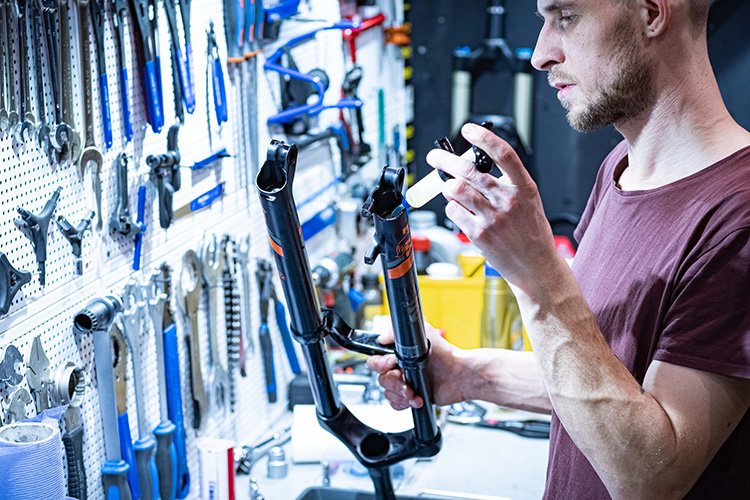
A well-maintained suspension system can significantly enhance the longevity and performance of your e-bike. Just like any other component, suspensions require regular attention to function optimally.
Here are some essential maintenance tips to keep your e-bike’s suspension in top shape:
- Regular Cleaning: After every ride, especially on muddy or dusty terrains, wipe down the fork stanchions and rear shock with a soft cloth to remove dirt and debris. This prevents the accumulation of grit that can damage the seals.
- Inspect for Damage: Periodically check the suspension components for signs of wear, scratches, or dents. Damaged stanchions or shock bodies can lead to oil leaks and reduced performance.
- Lubricate Seals: Use a suspension-specific lubricant to keep the seals moist. This not only ensures smooth operation but also extends the life of the seals. Avoid using standard oils or greases, as they might degrade the rubber seals.
- Check Air Pressure: For air-sprung suspensions, regularly check the air pressure using a shock pump. Ensure it aligns with the manufacturer’s recommendations and your weight.
- Rebound and Compression Settings: Periodically test and adjust the rebound and compression settings to ensure they match your riding style and terrain. Over time, these settings might drift and require recalibration.
- Annual Service: At least once a year, consider getting a professional service. This typically includes replacing the seals, oil, and inspecting the internal components for wear.
- Avoid Jet Washing: When cleaning your e-bike, avoid directing high-pressure water jets at the suspension components. This can force water and dirt into the seals and degrade the suspension’s performance.
- Store Properly: If storing your e-bike for an extended period, keep it in a cool, dry place. Avoid hanging the bike upside down if it has an air suspension, as this can cause the lubricating oil to seep into areas where it shouldn’t.
Read also: Electric Bike Maintenance Tips
Electric Road Bikes Don’t Need a Suspension
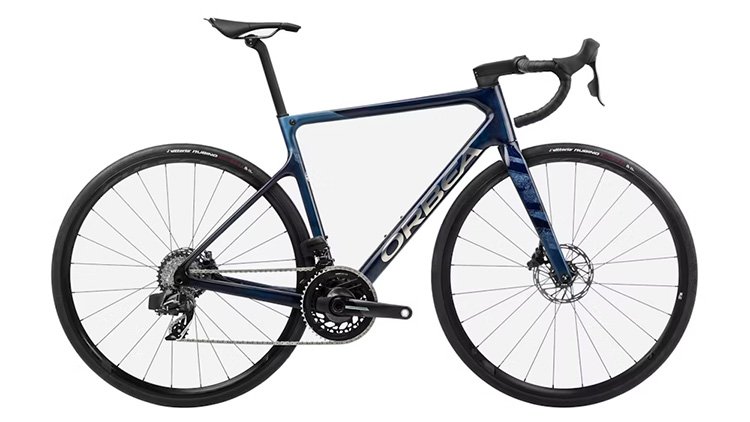
Electric road bikes are designed primarily for speed, efficiency, and performance on smooth, paved surfaces. Here’s why they typically don’t feature a suspension:
- Weight Concerns: Suspensions add extra weight to the bike. For road cyclists, where speed and agility are paramount, any additional weight can hinder performance.
- Energy Efficiency: On smooth roads, a suspension system can absorb some of the energy from pedaling, making the ride less efficient. Rigid frames ensure that most of the rider’s energy is directly transferred to the road.
- Aerodynamics: Road bikes are often designed with aerodynamics in mind. The sleek and streamlined design can be compromised with the addition of bulky suspension components.
E-MTBs Must Have a Suspension

Electric Mountain Bikes (E-MTBs) are crafted for rugged terrains, steep descents, and off-road trails. Here’s why they are equipped with suspensions:
- Varied Terrains: Mountain trails are filled with rocks, roots, and uneven surfaces. Suspensions ensure that the bike can handle these challenges while providing a smoother ride.
- Improved Traction: Suspensions allow the wheels to maintain better contact with the ground, especially on rough terrains, ensuring consistent grip and stability.
- Safety: On downhill sections or technical trails, suspensions provide better control, reducing the chances of the wheels locking up or skidding.
- Reduced Rider Fatigue: By absorbing the majority of shocks from the terrain, suspensions prevent excessive vibrations from reaching the rider, ensuring a more comfortable ride, especially on longer trails.
- Enhanced Performance: E-MTBs with suspensions can tackle more challenging trails and obstacles, allowing riders to push their limits and explore more adventurous paths.
Conclusion
E-bike suspensions play a pivotal role in tailoring your riding experience, whether you’re cruising city streets or conquering mountain trails.
By understanding the various suspension types and their purposes, you can make informed decisions that enhance comfort, performance, and safety. Dive into the world of e-bikes with newfound knowledge and ride with confidence!

The founder and the editor-in-chief of the Electric Wheelers blog. With a previous background in IT, sales, and video editing, he has now established himself as a micromobility expert.
He bought his first e-scooter over 5 years ago and since then has owned dozens of e-scooters and e-bikes. His deep understanding of the technical aspects, coupled with a keen eye for market trends, enables him to provide insightful and reliable content.
His commitment to promoting sustainable and efficient urban mobility solutions has made him a respected voice in the community of eco-friendly transportation enthusiasts.

